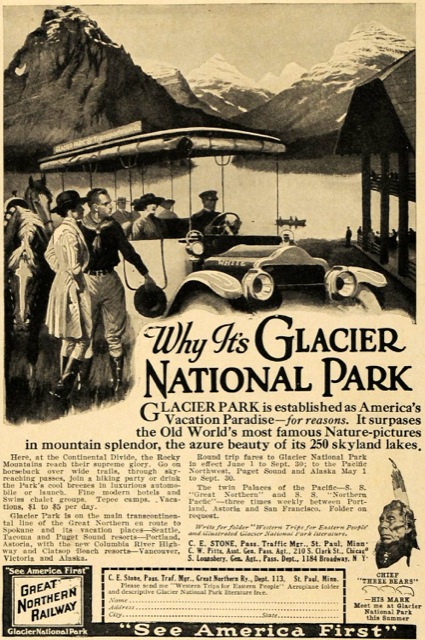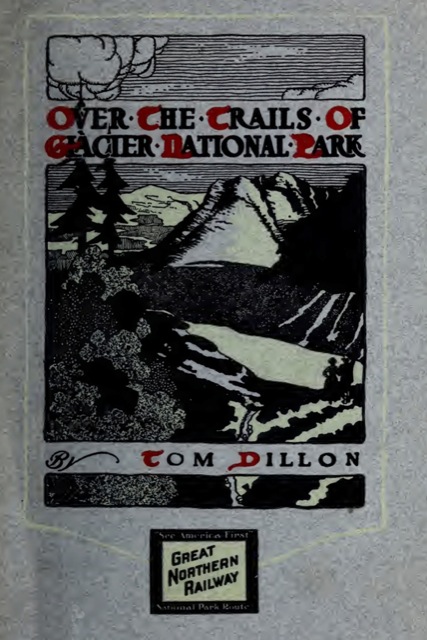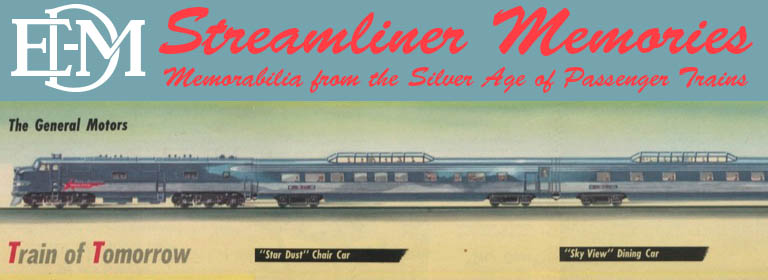In 1911, the year after Congress created Glacier National Park, Great Northern invited eight reporters to go on a tour of the park along with an artist and a “travelogue lecturer.” Four of the reporters were from Chicago, three from the Twin Cities, and one was from Seattle. Soon after, the Great Northern published this booklet by W.O. Chapman, who represented the Chicago Evening Post on the tour.

Click image to download a 16.0-MB PDF of this 40-page booklet.
Chapman writes in a humorous style, naming his fellow tourists “the General, the Sergeant, the Poet Lariat, Colonel Casey, the Adjutant, the Circuit Rider, the Rabbit Rider, the Artist, the Broker, the Wrecker, the Aeroplanist, Professor Film, Old Seattle, and Doc Cook.” His account is filled with tales of his companions’ nervousness about the wilderness. “‘On our way down, we saw a black bear in the trail,’ said the Sergeant. . . ‘Possibly that accounts,’ suggested the Wrecker, ‘for the speed with which you came into camp.'”

This ad is probably from 1914–the first year White touring cars were used in Glacier Park–or the year thereafter. Lacking touring cars and roads, Chapman’s trip through Glacier was by boat and horseback. Click image to see a larger view.
“Old Seattle” must refer to Tom Dillon, who was on the trip for the Seattle Post-Intelligencer. Dillon ended up writing a 1913 booklet published by the Great Northern, “Over the Trails of Glacier National Park,” a crisp but somewhat dark scan of which can be downloaded from archive.org. Dillon describes the same trip from Belton to Glacier as Chapman, but in a more newsy, less-humorous style.

Click image to download a 5.3-MB PDF of this 52-page booklet from archive.org.
Both booklets are filled with photos–one or two photos are in both but most are different–but Dillon’s book has more full-page photos giving a better idea of the park’s grandeur. Dillon’s book also features comics by Billy Ireland, a cartoonist for the Columbus Dispatch who apparently toured Glacier in 1912.
